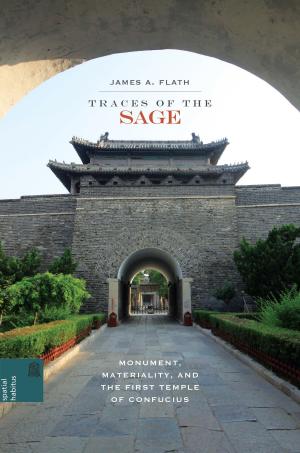A Chinese Traveler in Medieval Korea
Xu Jing’s Illustrated Account of the Xuanhe Embassy to Koryŏ
Nonfiction, History, Asian, Korea, China, Medieval| Author: | Sem Vermeersch, Robert E. Buswell, Jr. | ISBN: | 9780824866815 |
| Publisher: | University of Hawaii Press | Publication: | May 31, 2016 |
| Imprint: | University of Hawaii Press | Language: | English |
| Author: | Sem Vermeersch, Robert E. Buswell, Jr. |
| ISBN: | 9780824866815 |
| Publisher: | University of Hawaii Press |
| Publication: | May 31, 2016 |
| Imprint: | University of Hawaii Press |
| Language: | English |
"The king and ministers, superior and inferior, move with ritual and refinement. When the king goes on an inspection tour, everyone has the correct ceremonial attributes and the divine flag [troops] gallop in front while armored soldiers block the road. The soldiers of the Six Divisions all hold their attributes. Although it is not completely in uniformity with classic rites, compared with other barbarians it is splendid to behold. This is why Confucius thought it would not be a shame to reside here. And is not moreover Kija's country a close relative of the hallowed dynasty?"
So observed the Song envoy Xu Jing in the official report of his 1123 visit to Korea—a rare eyewitness account of Koryŏ (918–1392) society in its prime. Officially, the purpose of Xu Jing's visit was to condole the new king, Injong, on the death of his father and present him with a letter of investiture; unofficially, he was tasked with persuading Injong to align with Song China against the newly emergent Jin dynasty. Although famous for its celadon and Buddhist paintings, the Koryŏ period is still very much terra incognita in world history because of the lack of translated source materials. The present work, the first fully annotated, complete translation of a key source text on Koryŏ, fills this gap.
Xu Jing spent a little more than a month in the Koryŏ capital, Kaesŏng, but he was a meticulous chronicler, compiling a veritable handbook on Koryŏ that is full of fascinating details found nowhere else on daily life, history, customs and manners, buildings, the military, food, among others. However, Xu Jing was not unbiased in his observations and supplemented his work with unreliable information from earlier chronicles—a fact often ignored in previous studies of the Illustrated Account. In a substantial introduction to his translation, Sem Vermeersch not only places this important work in its historical context, but also reveals both the sources used by the author and the merits and limits of his observations, allowing historians of medieval Korea to make fuller use of this singular primary source.
"The king and ministers, superior and inferior, move with ritual and refinement. When the king goes on an inspection tour, everyone has the correct ceremonial attributes and the divine flag [troops] gallop in front while armored soldiers block the road. The soldiers of the Six Divisions all hold their attributes. Although it is not completely in uniformity with classic rites, compared with other barbarians it is splendid to behold. This is why Confucius thought it would not be a shame to reside here. And is not moreover Kija's country a close relative of the hallowed dynasty?"
So observed the Song envoy Xu Jing in the official report of his 1123 visit to Korea—a rare eyewitness account of Koryŏ (918–1392) society in its prime. Officially, the purpose of Xu Jing's visit was to condole the new king, Injong, on the death of his father and present him with a letter of investiture; unofficially, he was tasked with persuading Injong to align with Song China against the newly emergent Jin dynasty. Although famous for its celadon and Buddhist paintings, the Koryŏ period is still very much terra incognita in world history because of the lack of translated source materials. The present work, the first fully annotated, complete translation of a key source text on Koryŏ, fills this gap.
Xu Jing spent a little more than a month in the Koryŏ capital, Kaesŏng, but he was a meticulous chronicler, compiling a veritable handbook on Koryŏ that is full of fascinating details found nowhere else on daily life, history, customs and manners, buildings, the military, food, among others. However, Xu Jing was not unbiased in his observations and supplemented his work with unreliable information from earlier chronicles—a fact often ignored in previous studies of the Illustrated Account. In a substantial introduction to his translation, Sem Vermeersch not only places this important work in its historical context, but also reveals both the sources used by the author and the merits and limits of his observations, allowing historians of medieval Korea to make fuller use of this singular primary source.















